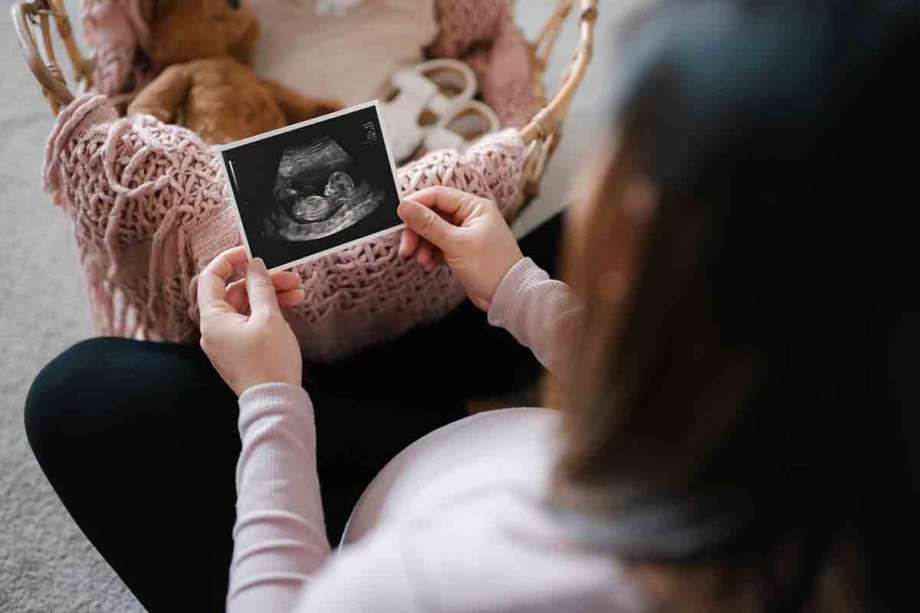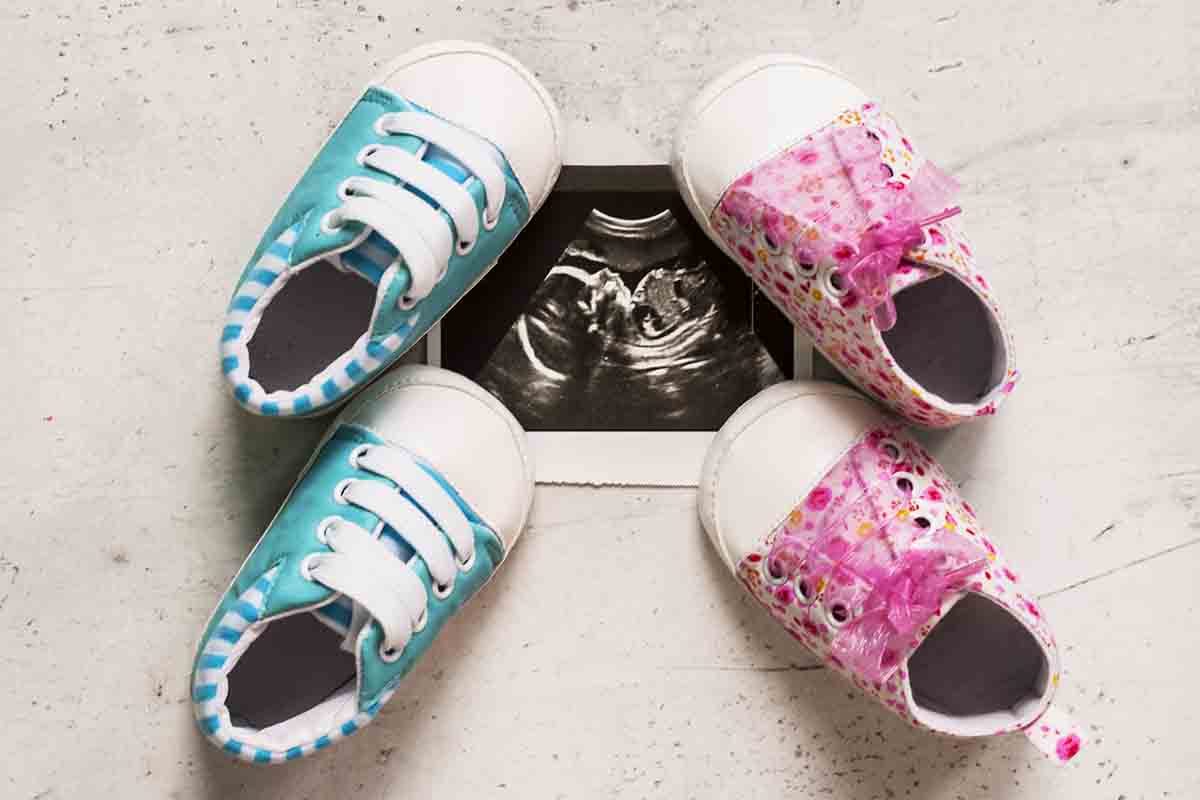Why Do I Keep Having Girl Babies (Or Boys)? Genetics and Gender

Why do some women only give birth to boy or girl babies? It could be, at least in part, due to genetics. Doctors have weighed in on what can genetically impact the sex of a baby.
We all know that the X chromosome and Y chromosome determine whether a woman is going to have a baby girl or a baby boy. But, why are some women having all boys while others are having all girls?
Is it a case of family history? Is there something that gives pregnant women an increased chance of giving birth to a baby with the same sex chromosomes over and over again?
We're going to take a look at why some women ask, “Why do I keep having girl babies?” while others wonder why they keep having boys.
A note about sex and gender: This article uses the terms “boy” and “girl” or “male” and “female” to refer to sex assignment at birth.
How Sex Chromosomes Determine Whether You Have a Baby Girl or Baby Boy
Some pregnant women may believe that environmental factors may play a role in what sex baby they have, while others look at their family trees. Whether you're having a baby for the first time or the fourth, we all really know that it's a matter of science.
The cells in our bodies are made up of 46 chromosomes that are grouped in pairs. Each pair has one chromosome from the mother and one from the father. Each sex cell carries half of the chromosomes.
When it comes to the mother's eggs, chromosome 23 is always X. For the father's sperm, chromosome 23 can be either X or Y.
“The sperm determines the sex of a baby depending on whether they are carrying an X or Y chromosome. An X and Y combine to make a boy, while an XX makes a girl," says Dr. Joel Gator Warsh, a Southern California-based integrative pediatrician.
Although it is the man's sperm that ultimately determines the sex of a baby, is it a coincidence that some women give birth to only boys while others only have baby girls?
Science and math have more to do with a baby’s sex than you’d think!
The Math Behind Determining a Baby's Sex
Dr. Kimberly Langdon, an Ohio-based OB-GYN and medical advisor at Medzino, a digital health company based in California and Germany, tossed some math and science our way to better understand gender assignment.[1]
Is a Baby’s Gender Really 50/50 Odds?
“What we have been taught conventionally is that — bar any genetic disorders that cause early pregnancy loss that only affect girls or boys — there is always a 50/50 chance of one or the other gender each time. The chance of a girl after three boys is still the same probability.”
The reason for this is quite simple: when sperm are produced inside a man’s body half will be formed with an X chromosome and half with a Y chromosome. There is an equal probability of either type of sperm reaching the egg and fertilizing it. So there is a 50/50 chance of having a girl or boy.
Related: How to Deal with Gender Disappointment
Does Having Only Boys or Only Girls Run in Families?

One study suggests that looking at family trees could give some insight into why some couples keep having only girls or only boys. A Newcastle University study looked at the family history of nearly 1,000 couples to try to get down to the bottom of why some families are all girls or all boys.[2]
Men with Brothers Have More Boys
Researchers found that men are more likely to have sons if they have more brothers and are more likely to have daughters if they have sisters. But, in women, the likelihood of having a girl or boy just couldn't be predicted.
It suggests that an as-yet-undiscovered gene controls whether a man’s sperm contains more X or more Y chromosomes, which affects the sex of his children.
How Dad’s Genes Affect Baby’s Gender
A gene, explains Dr. Langdon, consists of two parts, known as “alleles,” one inherited from each parent. “Newcastle researcher Corry Gellatly demonstrates that it is likely that men carry two different types of allele, which results in three possible combinations in a gene that controls the ratio of X and Y sperm.”
Men with the first combination, known as mm, produce more Y sperm and have more sons.
“The second combination, known as mf, produces a roughly equal number of X and Y sperm, and [men with a mf combination] have an approximately equal number of sons and daughters.
The third combination, known as ff, [causes men to] produce more X sperm and have more daughters.”
According to Dr. Langdon, “The gene that is passed on from both parents, which causes some men to have more sons and some to have more daughters, may explain why we see the number of men and women roughly balanced in a population.”
As we can tell from a variety of studies, more research needs to be done into why women only give birth to boys or girls. Much of the research has been focused on men because they have the deciding chromosomes, but more studies can be done to look at women’s family trees to see if any type of pattern can be determined.
Is it More Common to Have a Baby Boy Or Baby Girl?
Across the world, the ratio of male to female babies has always been skewed in favor of boys. Currently, the worldwide average sex ratio is roughly 105 male births for every 100 female ones.[3]
A theory that explains why is based on evolution. Being born male is a dangerous thing – boys are more likely to die at all stages of life due to accidents, taking risks, war, and health problems.
So, the theory goes that humans have evolved to produce more male babies than female babies to even out the numbers in adulthood.
However, the tide could be turning. Dr. Warsh tells Family Education, "A study published by JAMA, showed the percentage of males to females is shrinking.
Since 1950, significant declines in the proportion of males born have been reported in Europe, Canada, and the USA. The rates in this study showed a ratio of males to female births of 0.515 in 1950 to 0.513 in 1994."[4]
The researchers who carried out the study suggested possible reasons for this including an increase in pollutants in our air and water. One study (Goldsmith et al, 1984) found that men who were exposed to a pesticide had three times as many daughters as expected.
Can You Increase Your Odds of Having a Boy or a Girl?

Dr. Shettles, who published a book in 1971 called How to Choose the Sex of Your Baby, certainly seemed to think so. He proposed that male sperm (Y) are smaller, faster, and more fragile than female sperm (X) and that these differences in sperm cells can be exploited to choose the sex of a baby.
One suggestion of the Shettles method is to be careful about the timing of sex. To have a boy, conception should take place as close as possible to ovulation so that the smaller Y sperm can pass more quickly through the sticky mid-cycle cervical mucus.
However, there is no scientific evidence to back up his ideas. A study (Gray, 1991) that compared the time of conception with the sex of the baby showed the opposite of Dr. Shettles' hypothesis - more boys than girls were conceived 3 days before or after ovulation.
The researchers offered their explanation for this, that the levels of a hormone, gonadotropin, are high around ovulation and may favor X-bearing sperm, resulting in more girls.
Related: The Most Popular Gender-Predicting Old Wives' Tales of All Time
Can You Choose the Sex of Your Baby?
Being able to choose the sex of a baby is possible via a highly controversial procedure using in vitro fertilization (IVF) with Preimplantation Genetic Diagnosis (PGD).
PGD and Gender Selection Procedures
Today, it’s possible for fertility doctors to select the gender of a child during in vitro fertilization before the implantation process. In IVF, a number of eggs are removed from the mother and fertilized by the father’s sperm in a dish outside the body to create embryos.
Fertility doctors can then test the embryos via preimplantation genetic diagnosis (PGD), or preimplantation genetic screening (PGS/PGT-A) to detect any potential abnormalities that may cause birth defects or genetic disorders.
With gender selection, fertility doctors also identify if an embryo carries two X chromosomes or an X and a Y chromosome in order to determine if it will result in a male or female baby. An egg of the chosen sex is placed into the mother’s uterus to grow and develop.
However, this procedure is currently banned in many countries across the world but is available to parents in the U.S. for a very high price.
Many people are firmly against using PGD for reasons other than to test for serious genetic conditions. Genetic selection is controversial as many experts worry that it could result in unbalanced family planning or more extreme measures where parents want to choose all of their potential baby’s characteristics.
The Bottom Line on Genetics and Gender
Although there have been studies to look at why some pregnant women give birth to all boys or all girls, the topic is still one that baffles many in the medical field.
More research is needed to give us a real definite answer about why some women tend to birth the same gender.
“The bottom line is birth gender is a flip of the coin. You have a 50/50 shot each time of getting a boy or a girl," says Dr. Alyse Kelly-Jones, an OB-GYN based in Charlotte, North Carolina.
In the end, whether you have all boys or girls, any healthcare provider will tell you that having a healthy baby of either gender is what is most important.
For more fun facts about how parents’ genetics impact their babies, check out 6 Traits Babies Inherit From Their Father!

